Chinese Dragon Art and Culture
The image of the dragon can be seen in every corner of society: the dragon decoration, dragon carving, dragon kissing in the traditional Chinese architectures, dragon dance in the Lantern Festival, February 2nd dragon-head-rising Festival, eating dragon beard noodles, Dragon Boat Festival, dragon painting, dragon calligraphy, dragon poetry, dragon songs...
For Chinese culture vultures, you shouldn’t miss anything about Chinese dragon art and culture.
Origin of Dragon in China & Dragon Totem
Dragon totem is the national totem of Chinese Han nationality. The ethnic totem of the Han nationality is composed of a dragon and a phoenix, meaning Yin and Yang, that is, male and female. Since the Han nationality has a large population and ruled for most of the time in history of China, dragon continues to be thought as the oldest animal in China and as the symbol of Chinese.There are various theories about the origin of the image of the Chinese dragon, some say it came from the crocodile, some say it came from the snake, others think it came from the pig, and some even say that the earliest dragon was the lightning in the sky when it rained.
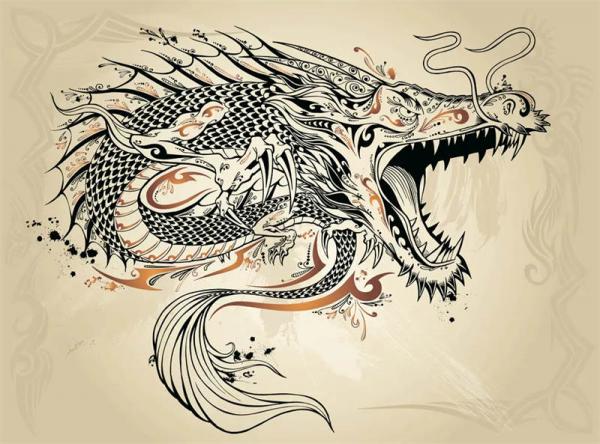
Now most experts believe that the Chinese dragon is a totem complex with the snake as the main body. It has the body of a snake, the head of a pig, the antlers of a deer, the ears of an ox, the whiskers of a sheep, the claws of an eagle and the scales of a fish.
In the ancient clan society, the Huaxia people in the Yellow River Valley (the former name of the Han nationality), who took the snake as a totem, defeated other clans and absorbed other clans' totems to combine the dragon totem.
In 1987, A large tomb of the early Yangshao Culture, more than 6,000 years away from today, was excavated in Henan Province. Beside the male tomb owner, a dragon made of clam shells was unearthed, which is the earliest dragon found at present.
Chinese Dragon and Chinese People
Chinese dragon and Chinese people are so synonymous today due to the role of dragon being the Chinese culture for thousands of years. In Han culture, the dragon has an important position and influence. The dragon has become the symbol of China, the symbol of the Chinese nation and the symbol of Chinese culture. The Chinese call themselves the decendants of the dragon.
s
In the eyes of the ancients, the dragon was a mysterious treasure, which was not easy to see. Even if it appeared, the head could not be seen, or only the scales and claws could be seen. The appearance of the dragon was a sign of peace, so the dragon was regarded as the biggest mascot in the world.
Chinese Dragon and Fengshui
"Dragon" is one of the most common terms used in Chinese Fengshui. Because the mountains and water in nature are varied in form and similar to the legendary dragon, the ancients compared both mountains and water to dragons, calling the mountains "dragon veins" and the tortuous water "water dragon". In this way, the dragon became the symbol of the mountains and the water.
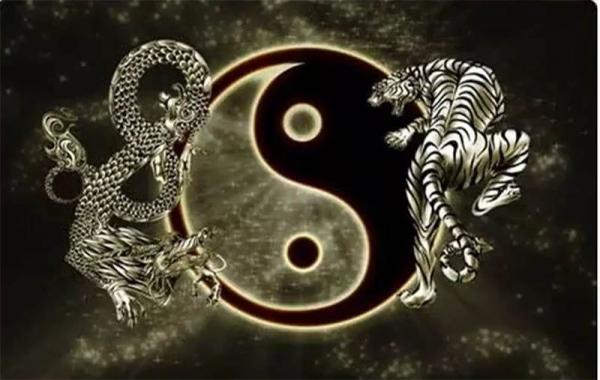
Because of the belief that dragons have some magical power, many modern people also like to use dragons as decorations at home. If the external environment of the residence lacks the true mountain and water, the dragon statue can be placed in the living room, as a symbol of landscape.
The dragon is closely related to water. The north belongs to water, so the statue of the dragon is also suitable to be placed in the north.
>> Read more about Chinese dragon symbols in Feng Shui
Feb. 2d - Dragon-Head-Raising Festival
The second day of the second lunar month is the "Dragon Head Raising Festival" in China. At this time, the Insects wake up and the spring comes, the earth gradually warm, folk believe that the dragons the rest for the whole winter raise their head is on this day. After this festival it will rain more.Some people in the North China make colored paper and grass stems in rings and hang them on the beam of the house to leave the dragon at home.
According to the folk custom, people's food on this day is from the dragon's body. For example, noodles are the dragon's beard, pancakes are the dragon's scales, dumplings are the dragon's ears and so on. So people eat more noodles and pancakes on the second day of February, because eating the dragon's whiskers and scales will not do much harm to the dragon. The most taboo is to eat rice, because rice is the sons of dragon, a meal of rice will hurt the lives of many dragons.
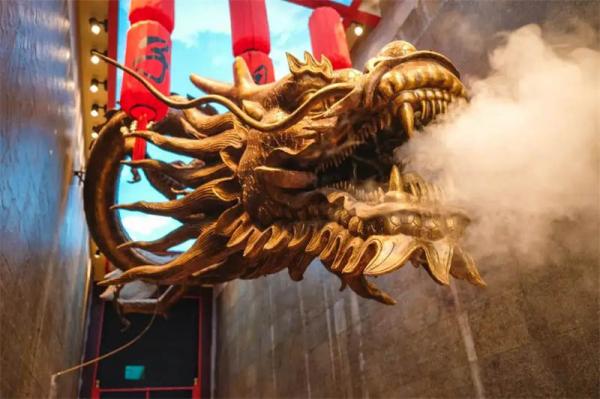
Fried corn is also a tradition of the Dragon-Head-Raising Festival. It is to commemorate the dragon to relieve the suffering of human drought, even at the risk of offending heaven.
Famous Chinese Architecture with Dragon: Forbidden City, and more
A large number of dragon statues and patterns are seen in the royal palaces, government offices, mansions of noble families, the mysterious temples, and even ordinary people's homes. The Nine Dragon Wall in the Forbidden City in Beijing, the dragon chair and the Dragon pillar in the Hall of Supreme Harmony, The Nine Dragon Wall in Datong, and dragon wall in Yu garden of Shanghai are most well known. >> Read more
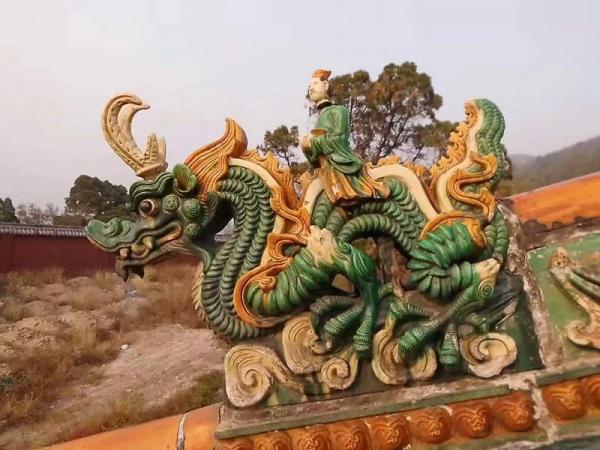
Dragon Dance
Dragon Dance, is a traditional folk culture activity of the Han nationality originating from China, and a traditional Chinese dance. The dragon dance originated from the ancient worship of the dragon. During festivals, people would perform the dragon dance, starting from the Spring Festival (China New Year), and then during the Dragon-rising-head Festival and the Dragon Boat Festival.
Dragon Boat Festival
The Dragon Boat Festival was created by the ancestors of Wu Yue (today’s Suzhou) in the south to worship the dragon. It is also held as in memory of Qu Yuan, a legendary poet in the Warring States period who killed himself in the Miluo River on May 5.Why have dragon boat racing at the festival?
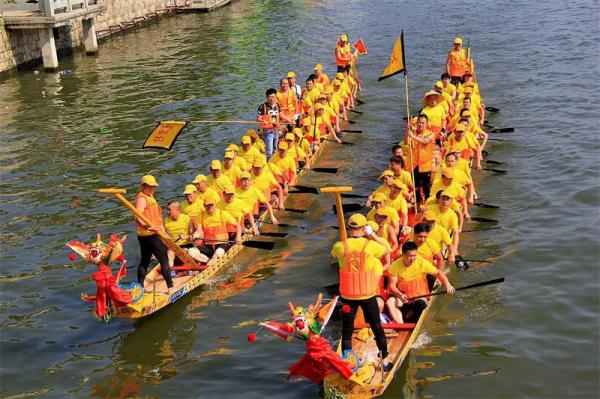
This can be seen in the Neolithic geometric pottery unearthed in the middle and lower reaches of the Yangtze River. The ancient states such as Wu, Yue and Chu were all located in water towns, and boats were their main means of transportation.
That is to say, the dragon boat race actually existed before the Dragon Boat Festival, but it was only later attached to Qu Yuan. In ancient times, there were many kinds of dragon boats, racing dragon boat was just one of them. There are other kinds of dragon boat for fun, dragon boat ceremony and so on.
Dragon Painting
It is said that Cao Buxing of The Three Kingdoms painted the first dragon. He was ranked as one of the eight best painting artists among the people at that time.Gu Kaizhi, a great painter in the Eastern Jin Dynasty, was also good at painting dragons. His painting "Ode to the Goddess of the Luo River" is now housed in the Palace Museum in Beijing.
Zhang Sengyao was a Legendary dragon painter in the Southern and Northern Dynasties. He painted four white dragons in Anle Temple, Jinling. After the painting was finished, he did not give the eyes of the dragons, saying that the dragons with the eyes would fly away. People didn't believe him, and made him to draw the dragon eyes. As a result, the two dragons with eyes flew away. The idiom "make the finishing point" has also been passed down to this day.
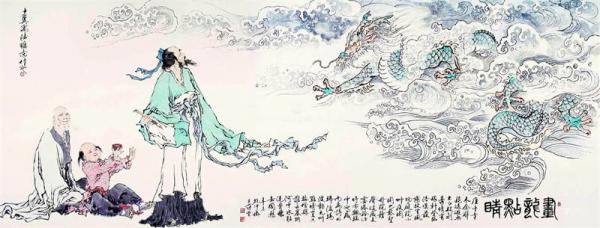
Chen Rong of the Southern Song Dynasty was thought to be the best dragon painter in ancient China. Before Chen Rong, ancient Chinese painters painted dragons in various forms and styles. When they saw Chen Rong's dragon, they exclaimed, "Wow, this is what a dragon should look like!"
Dragon Robe for King
The long Pao, or court dress of ancient Chinese emperors, is embroidered with a dragon pattern. It is a robe for the emperor of China. It was named because of the dragon pattern embroidered on the robe. In addition, dragon robe also refers to the dragon seal dress worn by the emperors in ancient China.The dragon designs on the dragon robe have changed in different dynasties. According to historical records, the emperor's dragon robes were embroidered with nine gold dragons, one on the front, one on the back, one on the left and right shoulders, two on the front and back knees, and one on the inside of the skirt.
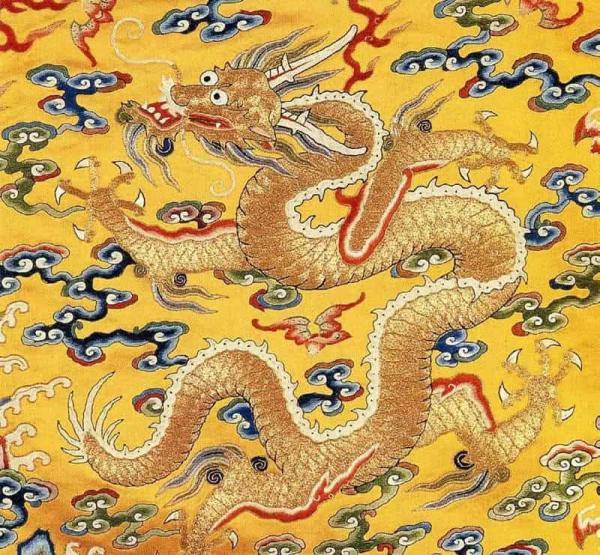
However, there are exceptions, the Ming Dynasty emperor dragon robe has more than nine dragon patterns. The "Kesi Twelve Chapters" of Emperor Wanli, unearthed in 1958, have twelve dragons, which are embroidered in the middle of a circle, popularly known as "Tuanlong".